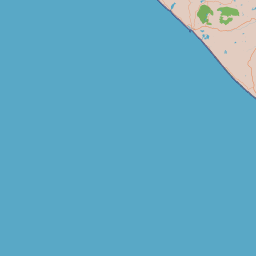| PAS_1 |
"According to the information given by farmer, when animal suffer from arthritis problem, 300 to 400 g roots of "tenkuda" are crushed to get an extract. This extract is drenched to the affected animal once. Thus, animal is completely cured of the arthritis problem. " |
| PAS_2 |
In India following herbal plant preparations are used for,
Glycyrrhiza glabra- family-Fabaceae, commonly known as licorice, they have antioxidant, antibacterial and anti–inflammatory activities.
Boswellia serrata- family- Burseraceae, commonly known as Salai guggal
Strychnos potatorum (Linn.)- family Loganiaceae, commonly known as Katakam,
Urtica pilulifera L.,- family- Urticaceae, used as an expectorant, purgative, diuretic, hemostatic, vermifuge and for the treatment of eczema, to alleviate inflammation, rheumatism, haemorrhoids, hyperthyroidism, bronchitis and cancer.
Polygonum viviparum L., - family- Polygonaceae, Polygonum viviparum L. methanol extract showed significant anti–inflammatory and anti–arthritic activity, without any analgesic, antipyretic and ulcerogenic activity,
Cinnamomum zeylanicum L. – family- Lauraceae
Justicia gendarussa burm. F. -family- Acanthaceae, alcoholic extract of Justicia gendarussa exhibits significant anti–arthritic potential.
Hibiscus platinifolius Linn- family- Malvaceae, Having a good anti–arthritic activity |
| Agro Ecological Zone |
Agro Ecological Sub Region (ICAR) Central Highlands (Malwa), Gujarat Plain (5.1) , Agro-Climatic Zone (Planning Commission) Gujarat Plains and hills region (XIII), Agro Climatic Zone (NARP) North Saurashtra, South Saurashtra (GJ-6,GJ-7) |
| Disease Symptoms / Clinical Signs |
Signs include varying degrees of lameness in the affected limb, joint swelling, fever, and the feeling of warmth upon manipulation. |
| Disease Description |
Joint pain is common in all breeds of cattle and can be life threatening to the animal. They are most commonly seen in young calves as secondary infections to umbilical (navel) infections shortly after birth. They may also be caused by direct trauma or wounds to the joint or the surrounding tissues. The most common joints that are affected are the carpus (front knee), stifle, or hock. While young calves can sometimes become lame and have a swollen joint secondary to trauma without infection, any lameness and joint swelling should be investigated as a possible joint infection, especially if there is evidence of an accompanying navel infection. |
| Disease Control |
When identified very early in the course of the infection, systemic antibiotics may be an effective treatment. |
| Disease Prevention |
Ensuring that the cow calves in a clean environment will significantly reduce the risk of joint ill (and many other diseases such as toxic mastitis and metritis). Proper planning and preparation can prevent the build-up of disease that occurs in too many calving areas. Applying a disinfectant (such as iodine) to the navel can reduce the risk of bacteria entering via the navel, but it is no substitute for good hygiene. It is also important to ensure that if cattle are born in a nice clean environment that they aren't moved to other pens or contaminated pastures until the navel has dried completely. |
| Precautions |
Maintain sanitary conditions in herd. Isolation of affected animals from healthy animals |
| Procedure of Use |
As a remedy of this ailment the roots of manna (Tamarix dioica) are collected and dried in the sun for three days. Thereafter, the roots are peeled and cut in small pieces which are fed to the animal for eight days in quantity of 100 g per day with water. This cures arthritis in the animal. |
| Etiology Causative Agent |
Caused by direct trauma or wounds to the joint or the surrounding tissues |
| Global Context |
Arthritis disorder in livestock animals is spread worldwide. The condition is more common in young animals than adult animals |
| Lesson Implication |
Joint redness, joint swelling, joint tenderness, joint warmth, locking of the joint, loss of range of motion of the joint, stiffness, weakness. |
| Other Medications / Treatments |
Infected animals should be separated and treated with antibiotics and pain killers. Antibiotic treatment should continue until after the signs have disappeared (which can take over a week even in mild cases), although severe cases may not recover even with prolonged antibiotic treatment. For large navel abscesses, veterinary intervention to drain and remove the infected tissue is often necessary. |
| Limitations of Approaches |
|
| Other Community Practices |
|
| Practice ID |
DTP0010000000457 |
| Reference |
HBN database |
| Annotation ID |
GIAN/GAVL/2415 |
| Reference |
HBN database |
| Scout |
HBN |












